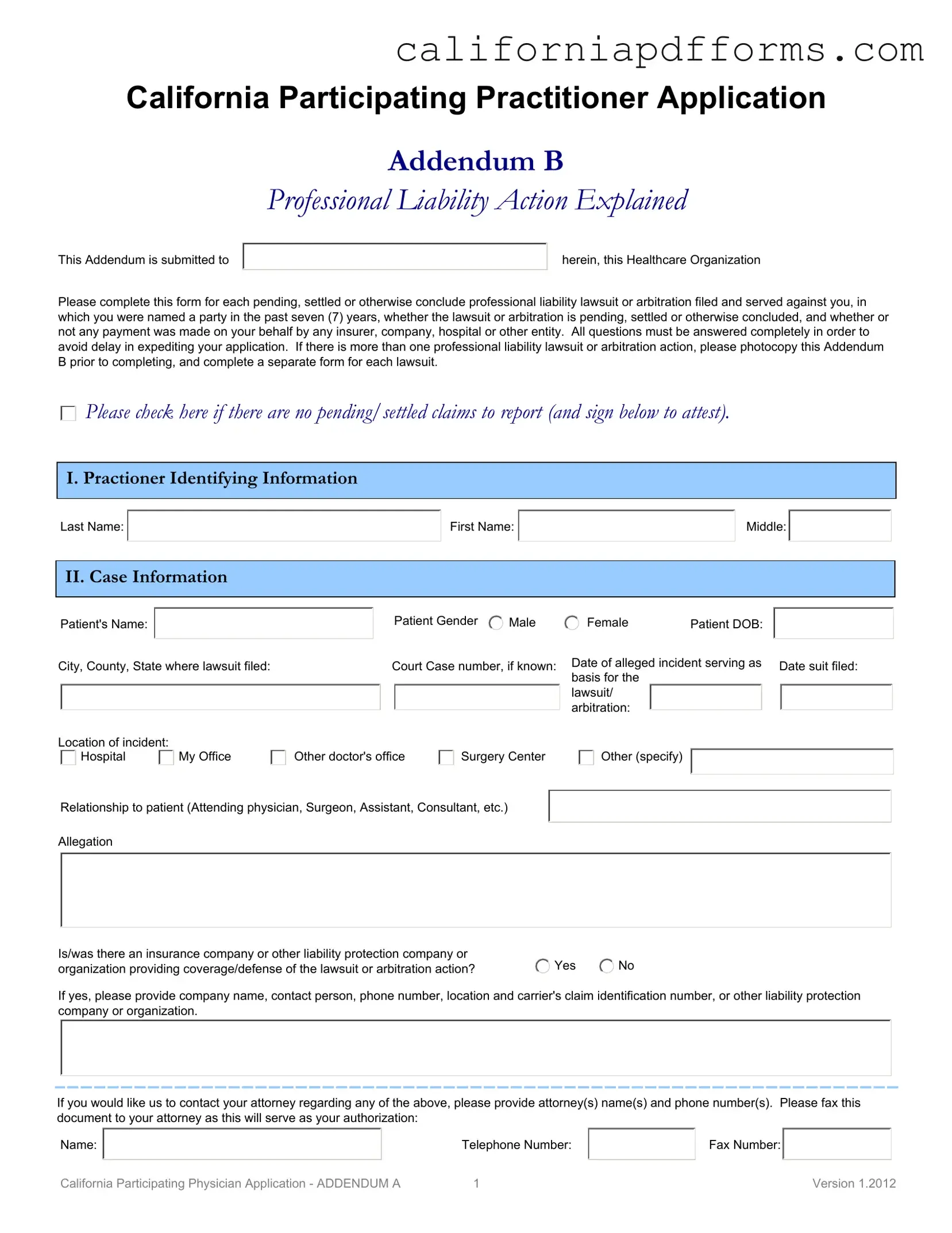The California Participating Practitioner form is a document that healthcare practitioners must complete when applying to participate in a healthcare organization. It collects essential information about the practitioner, including their professional liability history, which may include lawsuits or arbitration cases related to their practice.
Why do I need to complete Addendum B?
Addendum B is specifically designed to gather detailed information about any professional liability lawsuits or arbitration actions you may have faced in the past seven years. This includes both pending and resolved cases. Completing this addendum is crucial for the healthcare organization to assess your eligibility and qualifications accurately.
You will need to provide the following information:
-
Your identifying information, including your last name, first name, and middle name.
-
Details about the case, such as the patient’s name, the location of the lawsuit, and the nature of the allegations.
-
Status of the lawsuit or arbitration, including whether it is ongoing, settled, or if a judgment was rendered.
-
A summary of the circumstances surrounding the action, including patient care details.
What should I do if I have multiple lawsuits to report?
If you have more than one professional liability lawsuit or arbitration action, you must photocopy Addendum B and complete a separate form for each case. This ensures that each situation is documented accurately and comprehensively.
What if I have no pending or settled claims to report?
If you do not have any pending or settled claims, you should check the designated box on the form to indicate this. You will also need to sign below the statement to attest that the information you provided is complete and accurate.
How should I summarize the circumstances of the lawsuit?
Your summary should provide a narrative that includes:
-
The condition and diagnosis of the patient at the time of the incident.
-
The dates and descriptions of the treatment you rendered.
-
The condition of the patient after the treatment.
If you require more space, you may attach additional sheets with your detailed account.
The information you submit will be used by the healthcare organization to evaluate your application for participation. It is important to note that your information will be kept confidential and shared only for legitimate credentialing and peer review activities.
Can I authorize my attorney to discuss my case?
Yes, you can authorize your attorney to discuss any relevant information regarding your case with the healthcare organization. You will need to provide the attorney's name and contact information on the form to facilitate this communication.
Your signature on the form certifies that the information you have provided is true and correct. It also grants permission for the healthcare organization to access your medical malpractice insurance coverage and claims history, which is vital for the evaluation process.
